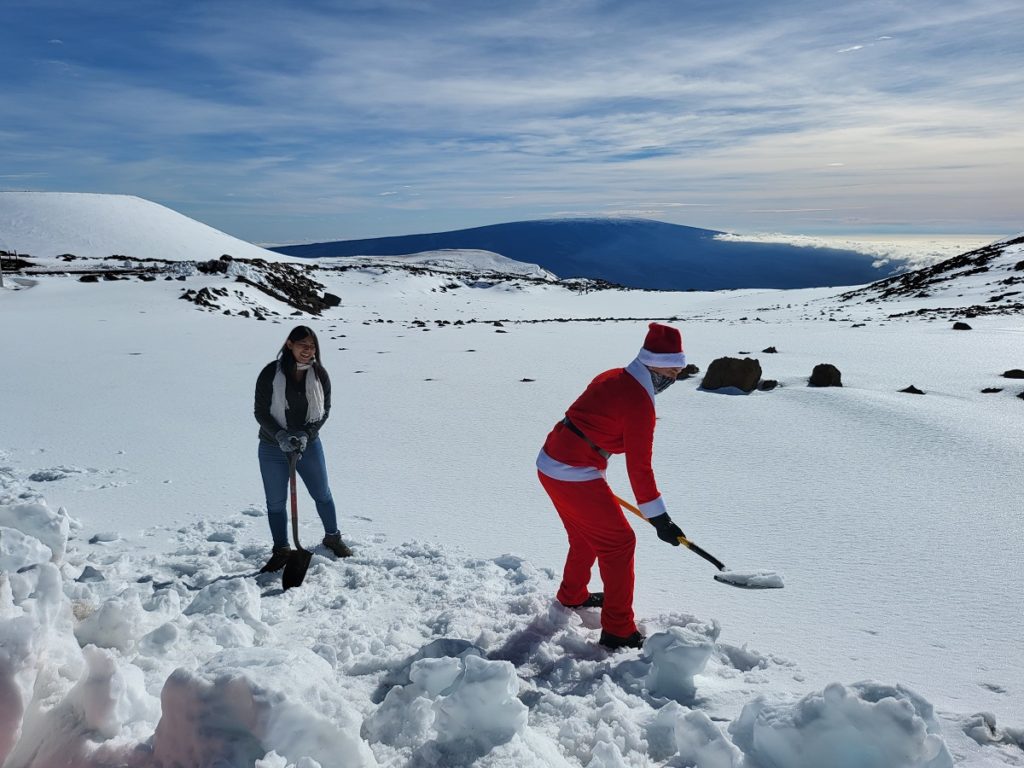
Road crews have been busy this week, plowing and repairing roads impacted by the blizzard which struck Hawaii last weekend. Today was the first day Mauna Kea was open, giving residents and tourists alike the chance to get the first view of the aftermath of the big winter storm.
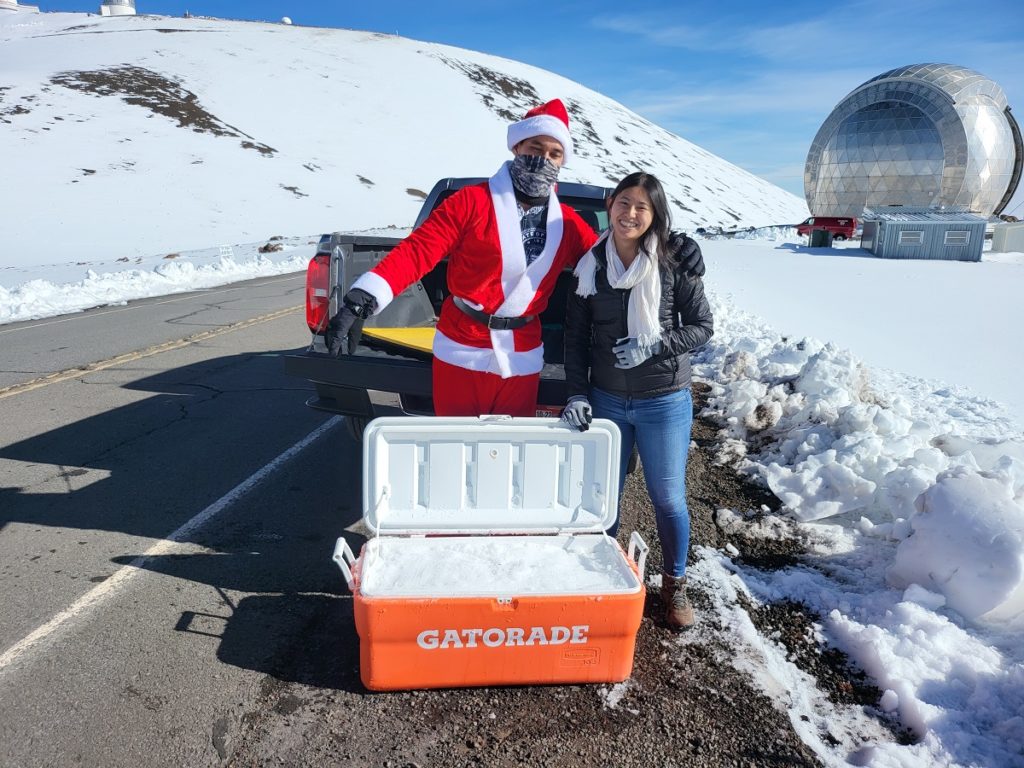
While most people don’t associate the tropical paradise Hawaii is known for with snow, they’re surprised to learn that it does snow in the winter due to the elevation of these volcanic peaks. Mauna Kea is the highest of the bunch at 13,803 feet. Maui’s Haleakala is much lower at 10,023 feet. Because of that difference, Hawaii Island will see snow more frequently than the lower Maui Island. Just one storm in January 2020 dropped 2-3 feet of snow on Hawaii Island and created snow drifts that were far deeper. Another storm this past January brought snowboarders and skiers out to the mountain by the dozens.
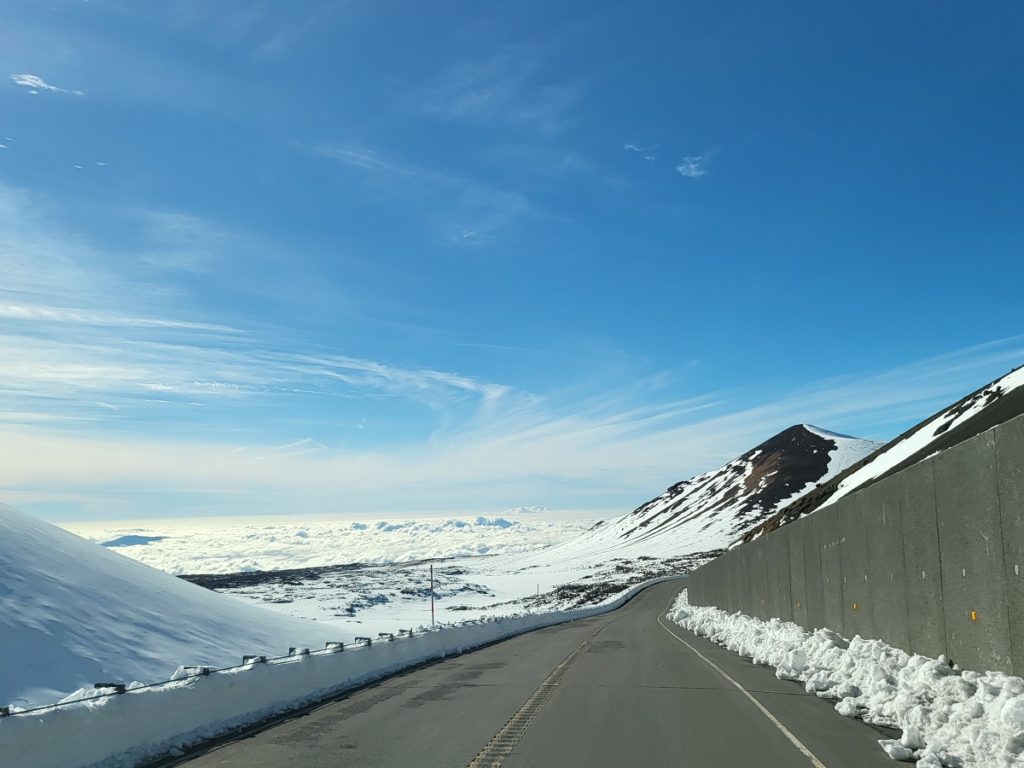
Beginning last Friday, the Aloha State was impacted by a significant storm system known locally as a “Kona Low”. The storm moved throughout the entire state, bringing heavy rains, blizzard conditions and heavy snow, 100-125+ mph winds, and extreme surf to the Big Island of Hawaii. Significant rains and winds impacted the other islands too, although only the Big Island saw significant accumulations of snow.
The Kona Low gets its name from the change in wind direction that occurs when such a storm moves over the Hawaii Islands. Hawaii is dominated by the trade winds that typically blow in from the northeast. However, the counter-clockwise flow around a Kona low located west of Hawaii results in southwesterly winds over the islands, which is typically the leeward or “Kona” side. Kona Lows are most common between October and April. These type of storms draw abundant moisture up from the warm tropical waters that surround Hawaii; when this moist flow interacts with the steep topography of the islands which helps to wring-out moisture, extremely heavy precipitation can fall. Because the wind flow around a Kona Low is atypical, flooding rains occur in places that may not ordinarily flood in tropical downpours that impact the islands from time to time. As this moisture taps into high elevation cold, it will often fall as exceptionally heavy snow on the higher peaks of Hawaii and Maui islands.
Driving this beast may be the coolest..or perhaps coldest job on Hawaii. This is one of the giant snow plow/throwers resting on the Big Island’s Mauna Kea, where it’s been busy the last few days clearing the roads of deep snow from last weekend’s #blizzard. #HIwx pic.twitter.com/mXolTX1kG8
— the Weatherboy (@theWeatherboy) December 10, 2021
With the roads to the blizzard’s ground zero opened today, December 9, many people flocked to the snowy summit to take in the view, enjoy snowboarding or skiing, or take some snow home with them.
Reed from Kona, who handles security for private groups, and Carrie from Hilo, pursuing a Masters in Education with Victoria University in New Zealand, came to Mauna Kea today to bring back snow to the coast. “Whenever the snow gets thick to play in and when the roads are safe, you’ll find us here,” said Reed. He and Carrie were busy shoveling the fresh snow into a large cooler near the summit of Mauna Kea where snow drifts several feet deep were. “We’re packing up this snow and we’re going to go visit friends that couldn’t be here. We’re going to ambush them with snowballs,” Reed explained. Carrie added they also planned to construct a giant snowman for the occasion. Reed said the snow is a great excuse for getting out of the house and doing something.
Fortunately, neither Reed nor Carrie were impacted by the Kona Low at their respective homes. Neither lost power, experienced flooding, or saw wind damage –even though all of that was present throughout the island from the Kona Low.
View this post on Instagram
Also enjoying themselves on the slopes today were Quinn Weaver from Kalapana and Simon Spruell from Kurtistown. Both came to the snow-covered landscape with their snowboards, looking forward to getting a good 10 or so runs in during the day before the sun sets. Unlike developed ski resorts, there are no facilities of any kind here for winter sports enthusiasts. Not only are there no public restrooms, but there’s no ski lift or tow rope available to bring people back to the summit for a run. As such, skiers and snowboarders need to hike back up each time they glide down the snowy slopes or hope the kindness of a stranger driving by will give them a lift back up to the summits.
A skier takes in the beautiful snow-covered view …in Hawaii! This is the aftermath of last weekend’s blizzard which covered Mauna Kea, shown here, with snow. Skiers & snowboarders were able to get to the snow for the first time today. #HIwx pic.twitter.com/YbRKbRe49J
— the Weatherboy (@theWeatherboy) December 10, 2021
While the landscape was covered with snow, the warm Hawaii sun moderated the air temperature quite well today. At about 5 feet above the surface, the air temperature was in the upper 50’s. And without any wind today, there were no windchill factors to contend with.
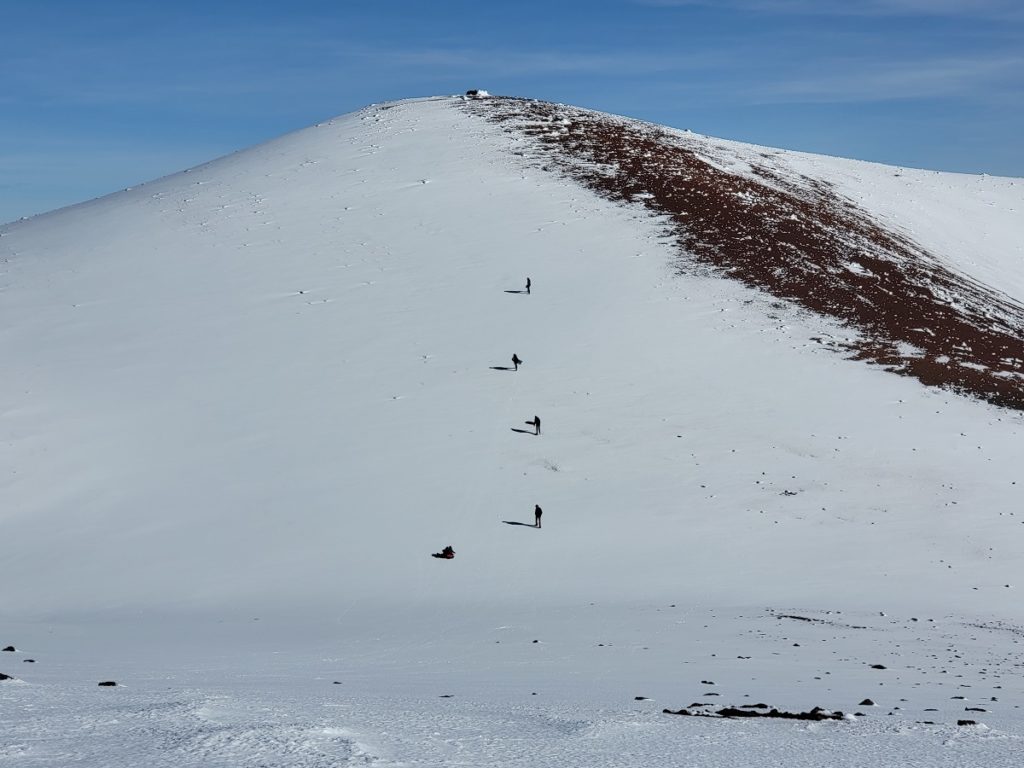
With relatively mild temperatures and no wind, many hiked up to the true summit of Mauna Kea. The peak, void of any roads or telescopes, was dotted with visitors today who would walk up and slide or sled back down.
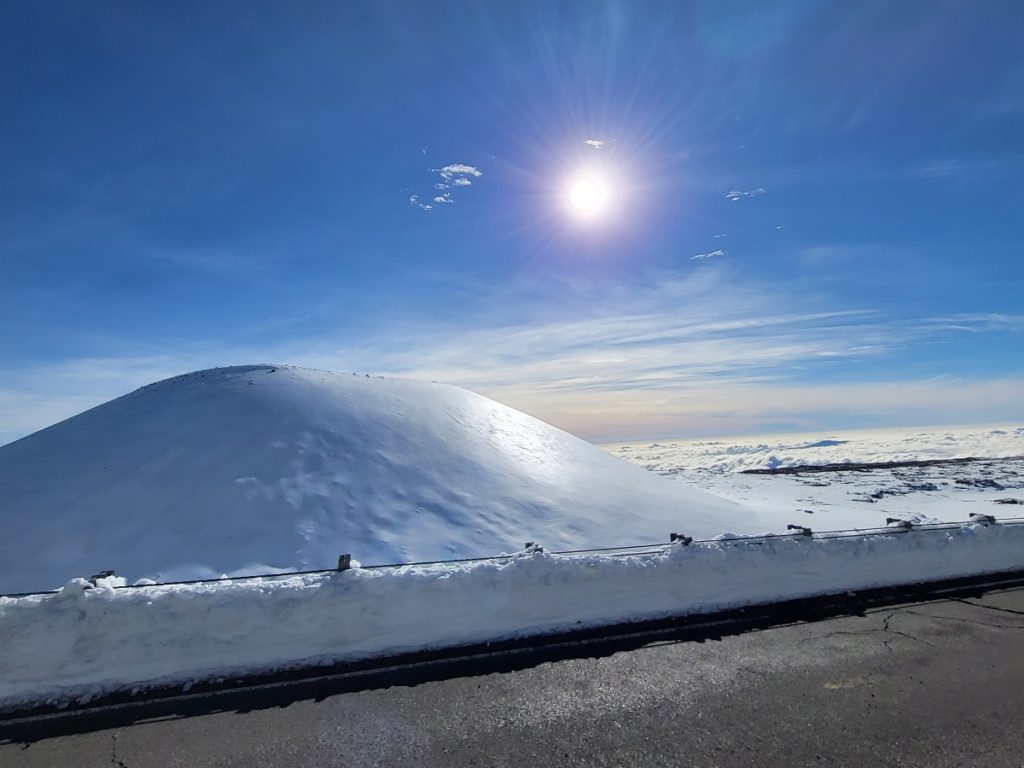
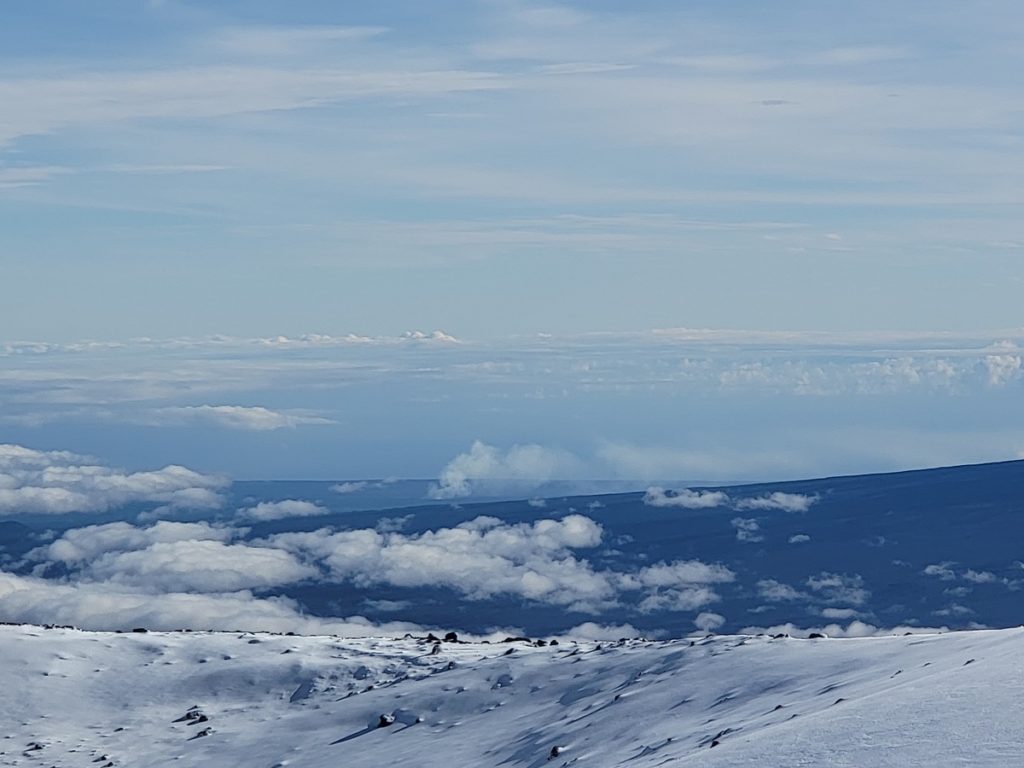
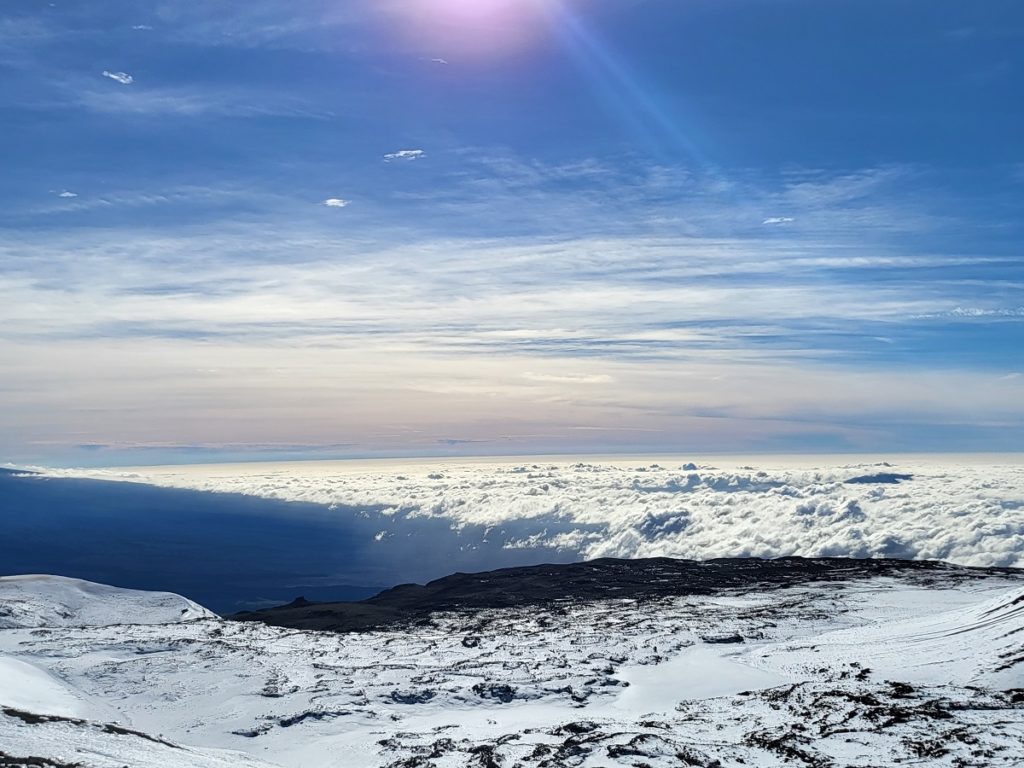
Yes, these are actual road signs …in tropical Hawaii! Roads are finally cleared after last weekend’s #blizzard, giving people the chance to explore the wintry landscape on the Big Island today. Snow-capped Mauna Loa is in the distance in this view atop Mauna Kea. #HIwx pic.twitter.com/lIAydWtZ0n
— the Weatherboy (@theWeatherboy) December 10, 2021
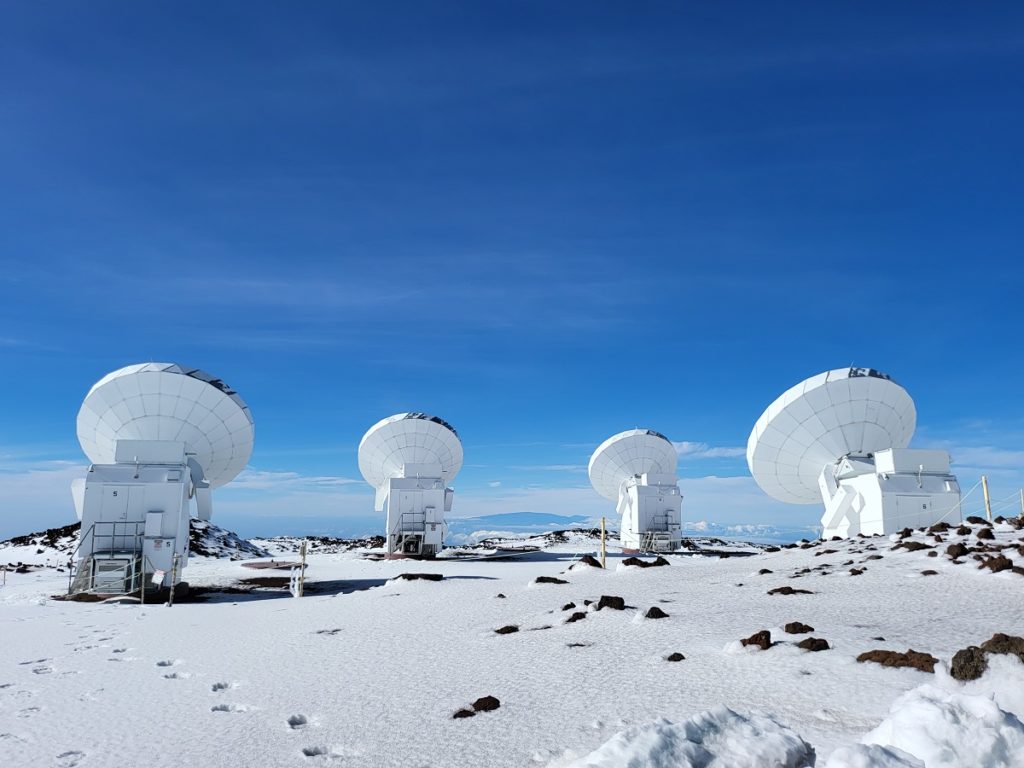
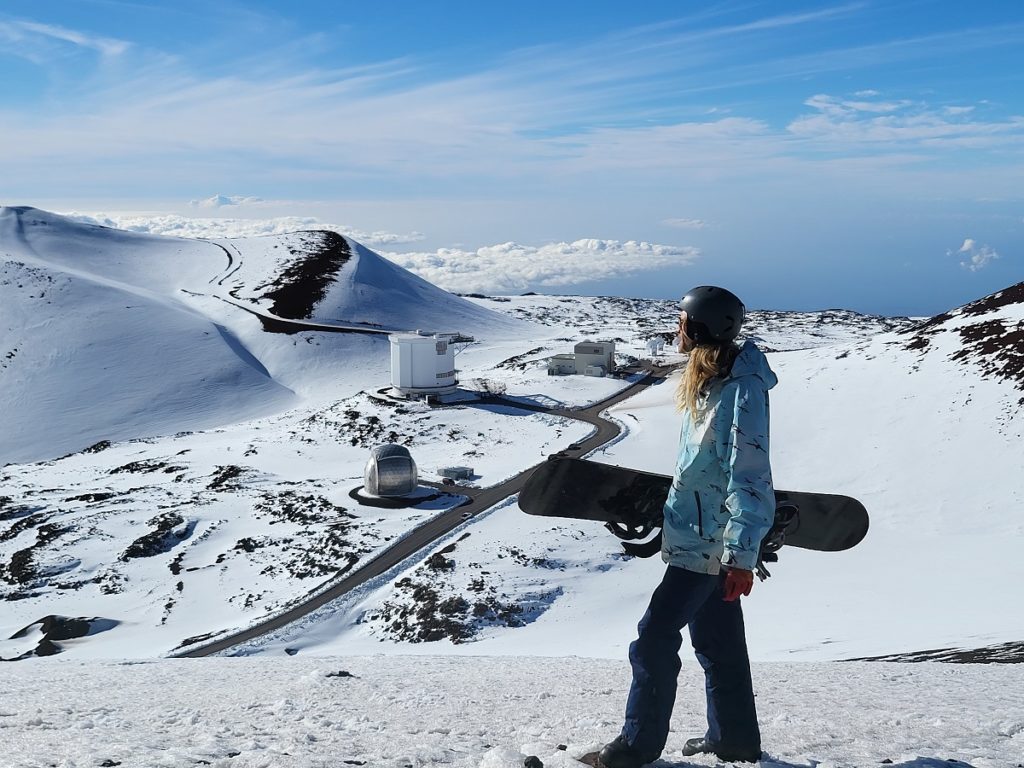
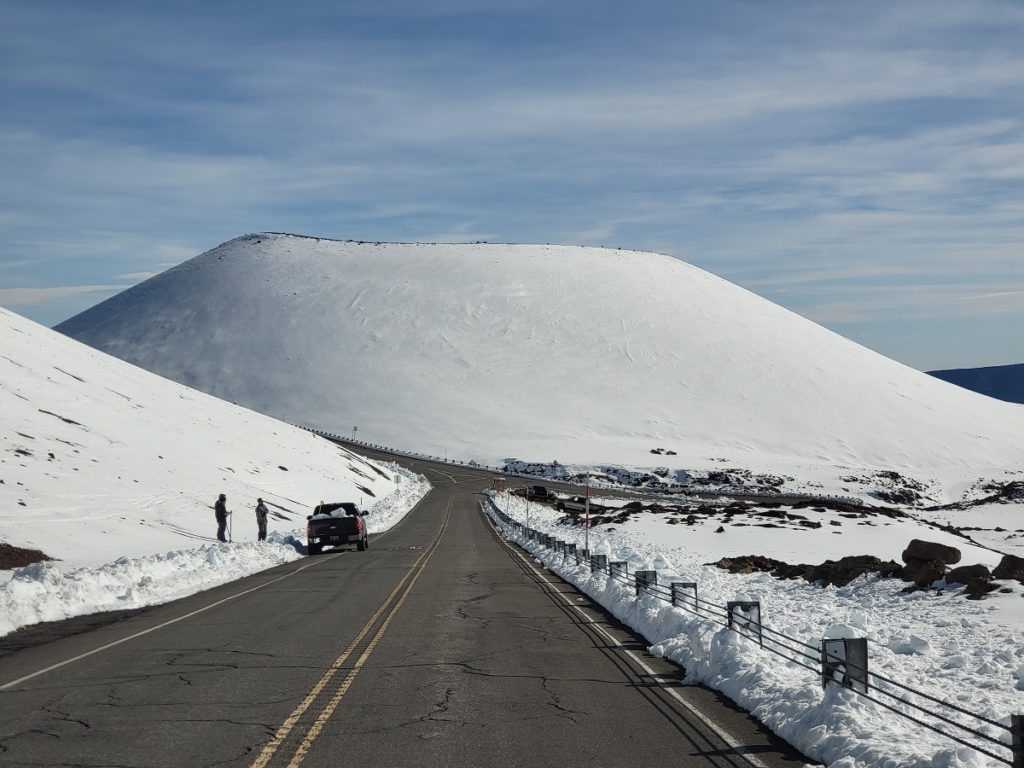
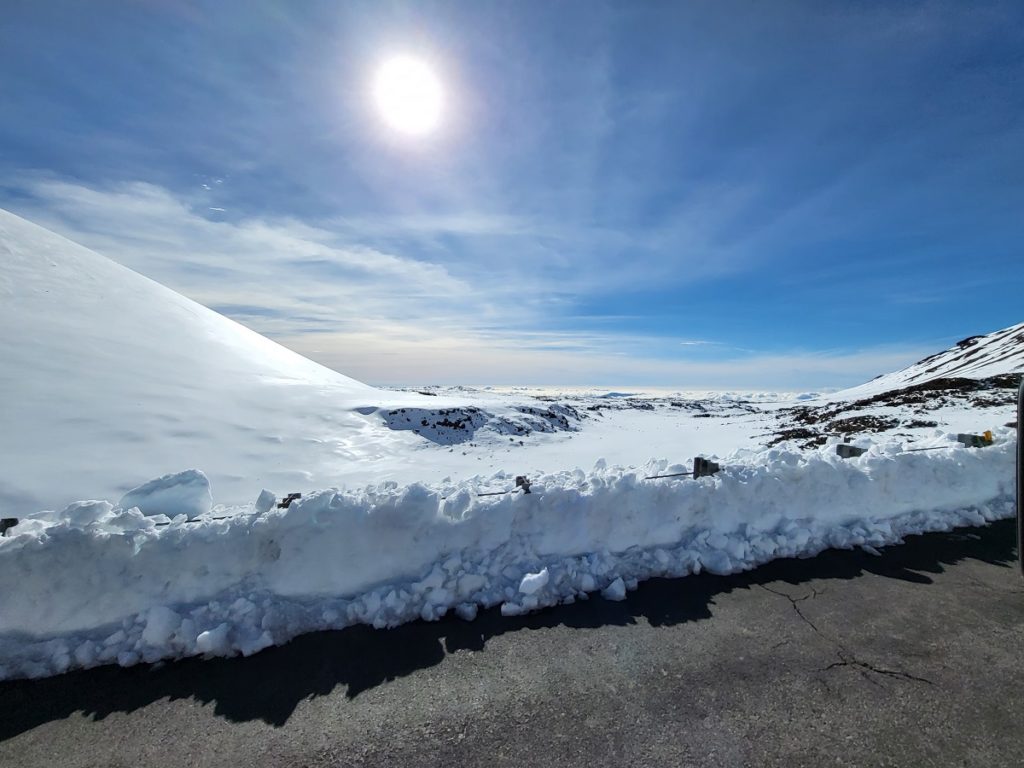
The snow will gradually melt away in the coming days with no new significant snow expected in Hawaii over the next several days.